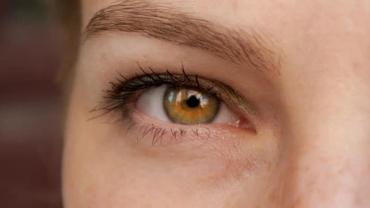
As we know compounds that give vegetables and fruits their eye-catching colors do more than make these foods pretty. They are bioactive molecules that impart health-promoting effects across different tissues and systems. Among these bioactive molecules are the carotenoids responsible for the yellow orange and red pigments in carrots pumpkin tomatoes watermelon papaya bell peppers corn and more. And among the carotenoids are of course the most famous beta-carotene but also alpha-carotene beta-cryptoxanthin lycopene and lutein. Mom’s advice to eat plenty of carrots for good eyesight wasn’t off the mark but she would have done well to give equal emphasis to lutein-rich foods.
Lutein is a non-provitamin A carotenoid—meaning unlike beta-carotene it isn’t converted into vitamin A in the body. It’s classified as a xanthophyll which is a carotenoid with hydroxyl (-OH) functional groups. (Another xanthophyll compound is zeaxanthin which often occurs along with lutein in foods.) The hydroxyl groups allow lutein to cross the blood-ocular barrier and the blood-brain barrier. (Other carotenoids such as β-carotene and lycopene do not cross these barriers.) We tend to think of these compounds as the exclusive purview of the plant kingdom but egg yolks are also a source of lutein. (Interestingly ounce for ounce egg yolks contain less lutein than richly pigmented green and yellow vegetables but the lutein in eggs is more bioavailable than that from plant sources.)
Even though it does not have vitamin A activity lutein is best known for supporting ocular health. Lutein concentrates in the lens and retina where it helps to absorb blue light and limit the amount of blue light reaching the underlying structures involved in vision thereby protecting against light-induced oxidative damage which is thought to play a role in the pathology of age-related macular degeneration. The absorption of blue light is one mechanism by which lutein may confer protection for vision; a second is through its activity as an antioxidant.
The natural aging process results in detrimental changes to the eyes that increase susceptibility to oxidative damage. (Isn’t there anything that gets better with age? Oy!) Age-related macular degeneration (AMD) is the leading cause of legal blindness in people over age 65 in the industrialized world. Several studies have shown lutein to be beneficial for AMD. Unfortunately a typical U.S. diet contains just 1–3 mg/day of lutein and zeaxanthin while an intake closer to 6 mg/day may be required for therapeutic benefit. (Intake may be even lower than 1-3 mg/day in individuals with low vegetable and fruit intake.) Diets high in total carotenoids and rich in lutein and zeaxanthin specifically may be protective of healthy vision over the long term.
Epidemiological data shouldn’t be mistaken for ironclad evidence but it’s still worth noting that higher carotenoid intake is associated with lower risk for AMD. One study found that among subjects age 55-80 those in the highest quintile of carotenoid intake had a 43% lower risk for AMD compared to those in the lowest quintile. Another study based on data from the Nurses’ Health Study and the Health Professionals Follow-up Study had similar findings: a 40% reduction in risk of AMD in the highest quintile of lutein & zeaxanthin intake compared to the lowest quintile. Keep in mind however that intake was assessed via food frequency questionnaires which are notoriously inaccurate and unreliable.
Considering the presence of lutein in eye tissue it would be difficult to imagine that this compound wouldn’t have at least some role in promoting ocular health. “Of the 600+ carotenoids found in nature forty to fifty are consumed in the typical diet and only 14 have been detected in serum. Of these 14 only lutein and zeaxanthin and their metabolites are located in the macula where they are found at the highest concentrations anywhere in the human body suggesting an important functional role for these molecules in the eye.” And there is some data to back this up. In a study wherein serum carotenoid levels were measured directly higher serum levels were associated with reduced risk for neovascular AMD.
Increased intake of lutein (and zeaxanthin) correlates with increased macular pigment optical density (MPOD). MPOD is “a measurement of the attenuation of blue light by macular pigment” and increases in MPOD may be at least partly responsible for improvements in visual function.
Like other carotenoids lutein is best absorbed with some dietary fat – as if anyone needed a reason to sauté spinach in olive oil add a pat of butter to a pile of steamed broccoli or cook collard greens along with smoky bacon. There’s a reason (well many reasons) the low fat diet is dying!